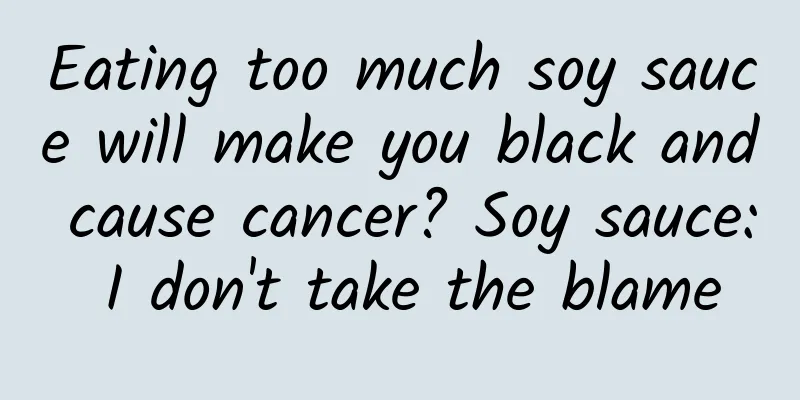Disposable chopsticks and your favorite nuts may be "attacked" by sulfur dioxide?

|
When browsing the Internet, have you ever seen news like this: merchants actually use sulfur dioxide to bleach nuts (especially pistachios), dried goods (such as vermicelli, white fungus, etc.) and disposable chopsticks. Some nuts and dried goods were found to have excessive sulfur dioxide content during testing. Nuts and dried fruits are foods that are directly put into the mouth, and chopsticks are also in direct contact with food. Can they really be bleached with sulfur dioxide? Let's talk about this today. The picture is taken from the Internet Bleaching properties of sulfur dioxide In high school chemistry textbooks, sulfur dioxide (SO₂) can be called a "star compound." It is a colorless gas with a pungent odor. Sulfur dioxide has a strong reducing property and can reduce some colored organic matter into colorless substances, so it has a certain bleaching ability . Recalling the high school chemistry class, the teacher may have done an experiment like this: when sulfur dioxide is passed into a fuchsin solution, the solution quickly fades, and after reheating, the fuchsin solution magically returns to its original color, which fully proves that the bleaching property of sulfur dioxide is reversible. It is these properties that make sulfur dioxide widely used as a bleaching agent, preservative and antioxidant in daily life. Sulfur dioxide is widely used in food. Sulfur dioxide is a toxic gas and one of the main air pollutants. Once the human body is exposed to excessive sulfur dioxide, it may cause symptoms such as difficulty breathing, vomiting, diarrhea, and even asthma-like reactions. So, can this toxic substance really be used to bleach food and chopsticks that are eaten directly? The answer is yes . In many countries and regions, sulfur dioxide is listed as a legal food additive. For example, the "National Food Safety Standard for the Use of Food Additives" (GB2760-2024), which will be implemented on February 8, 2025, contains relevant provisions on sulfur dioxide as a food additive. Sulfur dioxide and sulfites can be added to food as bleaching agents, preservatives, and antioxidants. It should be noted that what is actually added to food is not necessarily sulfur dioxide gas, but may also be salts such as sulfites . However, during testing, they will eventually undergo specific treatment and be calculated based on the residual amount of sulfur dioxide. Therefore, for the sake of convenience, it will be uniformly referred to as sulfur dioxide below. There are many types of foods that are allowed to add sulfur dioxide, including dried fruits, candied fruits, nuts, and bean curd sticks that are common in New Year's goods. In addition, noodles, dumpling wrappers, wonton wrappers, starch, white sugar and their products that are common in daily life are also allowed to add sulfur dioxide. In wine and fruit juice drinks, sulfur dioxide is also an important preservative and antioxidant. It can be seen that sulfur dioxide is widely used in the food field. But everyone can't help wondering, will sulfur dioxide in food harm human health? The Joint Expert Committee on Food Additives (JECFA) of the Food and Agriculture Organization of the United Nations (FAO) and the World Health Organization (WHO) has evaluated the safety of sulfur dioxide, and the results show that the daily allowable intake (ADI) of sulfur dioxide is 0-0.7 mg per kilogram of body weight. For example, for a person weighing 70 kilograms, the maximum daily allowable intake is 49 mg. What does this mean specifically? Let's take noodles, which we consume in large quantities on a daily basis, as an example. The maximum allowable amount of sulfur dioxide residue in noodles is 0.05g/kg, or 50mg/kg, which means that you have to eat about 1 kg of noodles every day to exceed the maximum allowable intake. Moreover, this is calculated based on the maximum amount of sulfur dioxide residue, so there is no need to worry too much about sulfur dioxide . It is undeniable that products bleached by "small workshops" must be treated with caution. Products produced by regular manufacturers must comply with the "National Food Safety Standard for the Use of Food Additives", but the safety of food sold by roadside vendors is difficult to guarantee. Some informal small vendors lack reliable sources of food and may sell directly without any testing. In order to make the food look better, they may use sulfur dioxide for bleaching, which can easily lead to excessive sulfur dioxide. In addition, some unscrupulous vendors will re-bleach nuts that have been stored for too long and pass them off as good ones. This type of food obviously poses a safety hazard. Therefore, it is recommended that you choose regular supermarkets when purchasing food. After all, these places need to be responsible for the safety of the food they sell . The situation of bleaching chopsticks with sulfur dioxide is similar. Whether using sulfur fumigation or sulfite soaking to bleach the raw materials of chopsticks, after the treatment, subsequent processes should be carried out to remove excess sulfur dioxide. However, in order to "save costs", some small workshops often omit the subsequent treatment process, resulting in excessive sulfur dioxide residues in the chopsticks produced. For example, in 2010, CCTV's "315 Gala" exposed a "black workshop" that used industrial sulfur to fumigate and bleach disposable chopsticks. Two days after using sulfur to fumigate the wood, the workers did not perform any operations to remove sulfur dioxide from the wood, but directly cut and polished it, and put it on the market after simple packaging. Even some moldy chopsticks were mixed with other normal chopsticks after bleaching and sold together. It is not surprising that the sulfur dioxide content of such chopsticks exceeded the standard. What should consumers do? For food, the solution to the potential risk of sulfur dioxide is not complicated. As mentioned earlier, when purchasing food, we should give priority to regular supermarkets and not buy products from unknown sources on the roadside just for the sake of temporary cheapness. After all, if we buy goods from regular channels, once there is a quality problem, we can clearly identify the object of rights protection and protect our own legitimate rights and interests. In comparison, when faced with the problem of excessive sulfur dioxide in disposable chopsticks, the measures we can take are relatively limited. When you unpack disposable chopsticks, if you smell a strong pungent odor, you should not use them anymore . When dining in a restaurant with good hygiene conditions, it is recommended not to use disposable chopsticks. If you buy food and eat it at home, using chopsticks at home is the safest choice. |
>>: There are so many misconceptions about this drug.
Recommend
Teach you a little secret to keep your pelvic floor muscles healthy: the "can" 360-degree breathing method
Author: Lin Tangdi, Lou Wenjia, Zhang Xue, Wei Hu...
Do bed sheets and quilt covers have an expiration date? How to deal with unwanted old sheets?
Bed sheets are a common type of bedding in our da...
Symptoms of a left adnexal cystic mass
Gynecological diseases are the most troublesome p...
What fruits can girls eat when they have their period?
Fresh fruit is a good thing, especially women sho...
What is multiple cervical cysts?
Multiple cervical cysts are a type of cervical in...
How to treat breast calcifications
Breast calcification refers to the problem of cal...
Can pregnant women eat chocolate during confinement?
After giving birth, be careful or avoid eating sp...
There is something white in the woman's vagina
Women are very susceptible to various gynecologic...
The consequences of less bleeding after artificial abortion
Nowadays, life is becoming more and more open, an...
Can pregnant women get eyebrow tattoos? Don't do this again.
Every woman loves beauty, so most women have the ...
What are the precautions during pregnancy
For most pregnant women, they are actually new mo...
What's wrong with a 17-year-old girl's irregular menstruation?
In our daily lives, many 17-year-old girls experi...
What causes abdominal cramps in early pregnancy?
During pregnancy, most people who are pregnant wi...
On which day of menstrual period can I jog?
You cannot run on the first few days of your mens...
How to avoid cholestasis when having a second child?
With the opening of the second-child policy, many...









